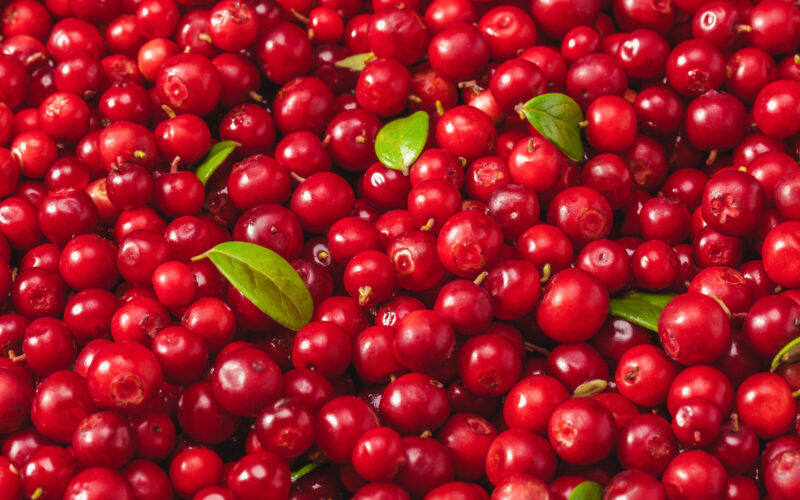If you’ve ever suffered through a UTI (urinary tract infection), you probably remember the tell-tale signs: feeling like you need to urinate constantly, a burning sensation when you use the bathroom, or urine that is cloudy or even red-tinged in color. UTIs can be painful and frustrating, especially when you get them often and they just keep coming back.
Fortunately, some supplements may be particularly helpful to those who struggle with recurrent UTIs. A commonly-touted supplement for the treatment and prevention of UTIs is D-mannose, a simple sugar closely related to glucose. Some evidence suggests that D-mannose can be beneficial in preventing E. coli bacteria from attaching to the urinary tract [1].
Still, other large trials found that D-mannose had little effect in mitigating UTI risk [2]. A recent small study from Rutgers University compared D-mannose to another supplement, a hyper-concentrated form of cranberry juice extract called Ellura [3]. Study results suggest that Ellura may be more effective than D-mannose at preventing urinary tract infections.
What did the researchers study?
In the Rutgers study, researchers were interested in comparing D-mannose to the concentrated cranberry supplement Ellura to see whether and how much each supplement stimulated anti-adhesion activity (AAA) against the two kinds of E. coli bacteria that most commonly cause UTIs [3]. They studied the urine of 20 participants who took either Ellura or D-Mannose for just one week. Samples that contained AAA meant the supplement was effective in preventing E. coli bacteria from adhering to the urinary tract (and causing an infection).
Study participants were healthy men and women between the ages of 25 and 60 who did not have a history of recurrent UTIs. They were instructed to keep their fluid consumption consistent over the course of the study. Participants took their assigned supplement (either D-mannose or Ellura) and then switched to the other during the second phase of the trial. Each participant collected a total of 30 urine samples, and all were tested for their bacterial anti-adhesion activity (AAA). Participants took each supplement for one week while they collected their urine, plus had a five day wash-out period where they did not test or take any supplements (to ensure quality control as they switched from one intervention to the other).
Ellura was the AAA winner
The Rutgers study found that both D-mannose and Ellura caused AAA against certain kinds of E. coli bacteria, meaning that both supplements can be beneficial in preventing bacteria from adhering to the urinary tract. However, D-mannose did not prevent the adhesion of P-type E. coli in urine, which can potentially cause kidney infections (pyelonephritis). It did create AAA against another type of E. coli known as Type 1, but it did so inconsistently and researchers suspect it was not entirely due to the D-mannose. Overall, researchers found that D-mannose had glaring limitations in preventing UTIs.
Ellura, on the other hand, was found to significantly and consistently prevent the adhesion of both P-type and Type 1 E. coli bacteria. Researchers concluded that Ellura can “provide more consistent, broad-spectrum AAA against both P-type and Type-1 uropathogenic E. coli with low potential side effects when compared to D-mannose products taken on a daily basis for maintenance of urinary tract health” [3].
These results are not only promising for those who struggle with frequent UTIs and are looking for a solution. They may also be welcome news to the general population, as UTIs are increasingly resistant to antibiotics, the typical treatment. Preventing a UTI with a supplement like Ellura is much simpler than treating an infection after it has occurred, and prevents the need for repeated antibiotic use.
Is Ellura the same as other cranberry supplements or drinking cranberry juice?
The next important questions are: what exactly is Ellura, and is it just the same as any other cranberry supplement (like this one from Azo) that you can find at the drugstore? In a word, no. Ellura contains 36mg of cranberry proanthocyanidin (PAC), a chemical compound found in fruit or flowers that have anti-inflammatory or medicinal properties.
The main difference between this supplement and others is that while all cranberry supplements include some amount of PAC, other products use the whole cranberry (including the pulp, stems, seeds, and skins). Thus, they are not as concentrated and do not create anti-adhesion activity (AAA) in the same way that a hyper-concentrated form does. Ellura uses only cranberry juice extract and each pill contains a standardized 36mg of PAC, which researchers have found to be the required amount to create sufficient AAA to prevent a UTI. Previous research established 36mg of PAC as the necessary threshold, but other supplements do not contain standardized or high amounts of PACs [4].
Another study suggested all forms of cranberry could be beneficial to prevent UTIs, finding that 53% of people who have recurring infections can benefit from taking cranberry supplements or drinking cranberry juice regularly to prevent new infections [5]. However, this needs to be studied further to fully understand the differences between taking cranberry juice or supplements in forms other than highly potent versions like Ellura.
The Ellura vs. D-Mannose study confirmed other findings of D-mannose’s limited effectiveness
While the Rutgers study does give us promising research about the benefits of taking a concentrated PAC form of cranberry to prevent UTIs, it also pointed out D-mannose’s inconsistency in preventing AAA (which may explain its ineffectiveness). This supports another review of studies on the effectiveness of D-mannose, which found the evidence in favor of D-mannose to be minimal and of poor quality [6]. Another large study agreed, finding that D-mannose barely outperformed a placebo for UTI prevention [2].
What we still don’t know about Ellura for UTI prevention
More research needs to be done to fully understand the mechanisms behind how both Ellura (and, to a lesser extent, D-mannose) create AAA. The Rutgers study stated that more data is necessary to determine if AAA is higher at different points in the day or if its protection against E. coli is sustained and consistent.
A potential blindspot of this study is that while Ellura is largely taken by people who have a history of UTIs and wish to prevent them, the Rutgers study only tested healthy participants who did not have an extensive history of urinary tract infections. Further research using participants who have a history of UTIs would be especially helpful to clarify its preventative value against recurrent infections.
Takeaways
If you’re prone to frequent urinary tract infections, it might be worth checking out Ellura on top of taking other preventative measures. With more and more infections becoming resistant to antibiotics as time goes on, focusing on prevention is key, especially if you’ve dealt with UTIs in the past.












Interesting piece and look forward to futre info on this subject.